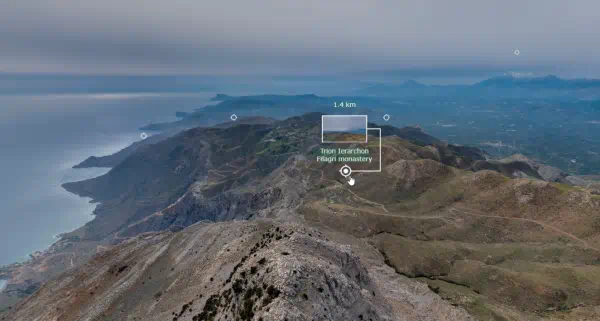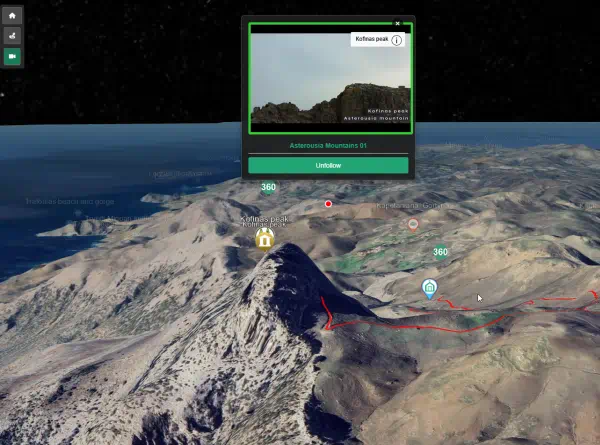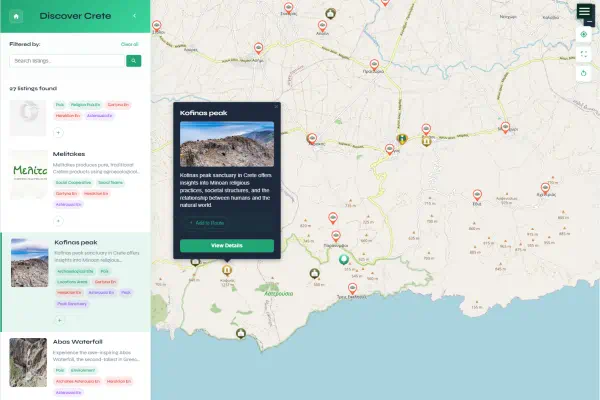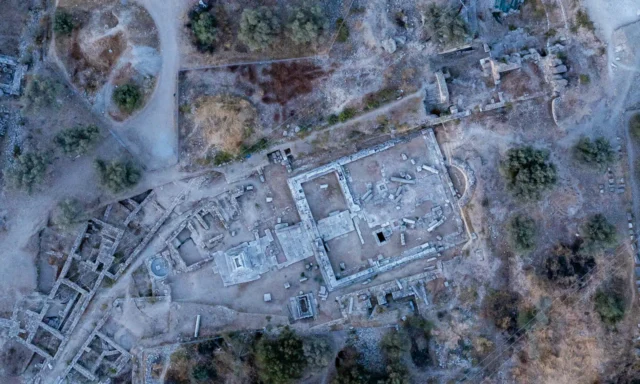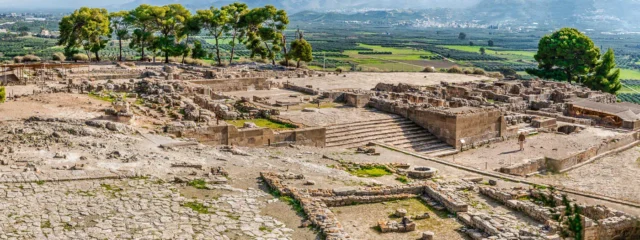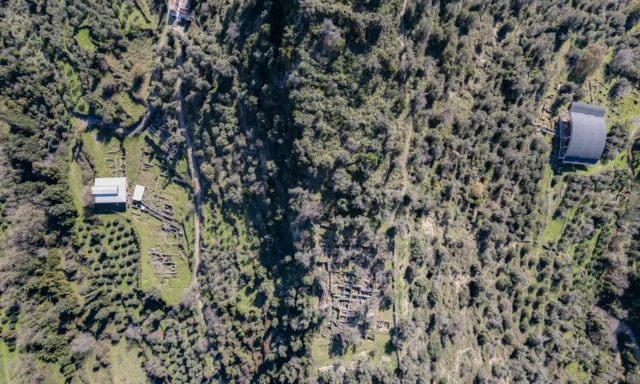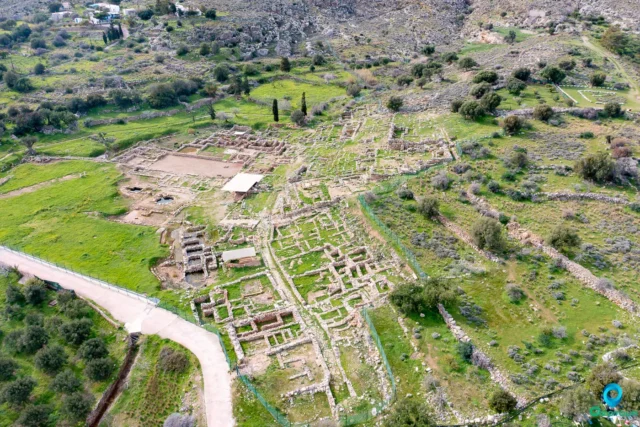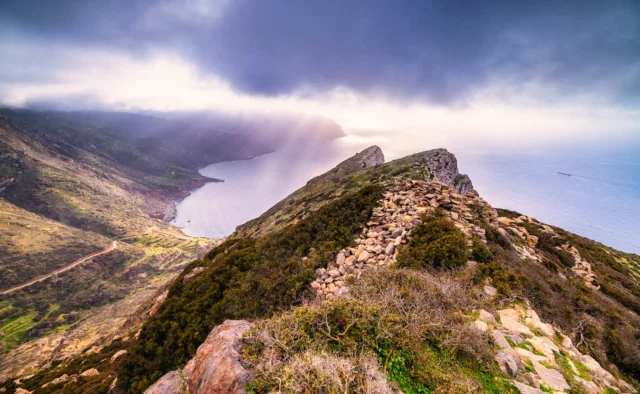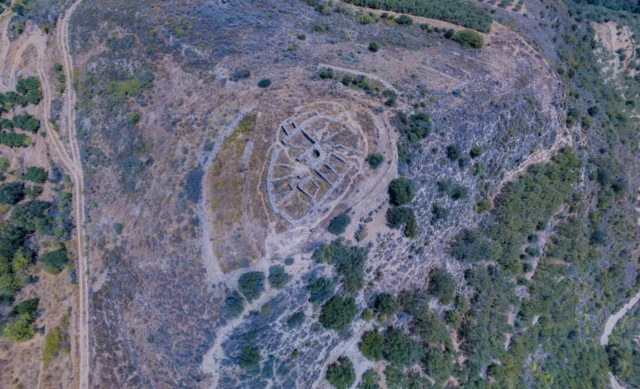Mochlos, located on the north coast of Crete, was a significant Minoan settlement and port. Its history spans from the Early Minoan (EM) period through the Late Minoan (LM) period, with substantial evidence of continued activity and importance in the Mycenaean, Hellenistic, and Roman periods. Excavations, initially conducted by Richard Seager in 1908 and continuing to this day under the direction of Jeffrey Soles and Costis Davaras, have revealed a complex settlement history, including a flourishing EM period, a decline in the Middle Minoan (MM) period, a revival in the Neopalatial (LM I) period, and eventual destruction and reoccupation. The site offers invaluable insights into Minoan social structure, trade networks, craftsmanship, religion, and daily life, and it also demonstrates the island’s integration into the wider Mediterranean world during later historical periods.
The island of Mochlos, now a small islet east of the Gulf of Mirabello in Eastern Crete, was once connected to the mainland. During the Minoan period, a narrow spit of land likely joined it to the adjacent coastal plain, creating a geographically distinct area somewhat isolated from the rest of Crete by the Ornos mountains. This strategic location, coupled with natural harbors facing east and west, fostered the development of an important Minoan settlement that served as a crucial node in regional and international trade networks. The site’s importance is reflected in its extensive material record, demonstrating sophisticated craft production, imported materials, a complex social hierarchy, and a continuing presence in post-Minoan times.
Historical Development
Early Minoan Period (EM I-III)
Mochlos’s earliest occupation dates to the EM I period, evidenced by a sealed deposit of EM I material beneath a tomb in the prepalatial cemetery. The settlement’s major growth occurred during the EM IIB period, likely due to an influx of settlers from central Crete, attracted by favorable conditions: sheltered harbors and a fertile coastal plain. The abundance of EM II pottery and high-status tombs with distinctive grave goods (gold jewelry, stone vases, a decorated dagger) support this.
The EM III period marked Mochlos’s zenith. It became a central trade hub within the Cretan network, controlling valuable goods. Its strategic location, with dual harbors, facilitated navigation and maritime trade. The concentration of significant sites in the Mirabello Bay (Mochlos, Pseira, Priniatikos Pyrgos) highlights the region’s importance. The stability of the EM III settlement landscape suggests well-established trade networks and foreign relations, forming a foundation for Minoan civilization’s development. Settlement distribution patterns—a concentration within 3 km of the coast, a less dense “middle zone,” and a sparsely populated “hinterland”—highlight the Minoan society’s coastal orientation.
Middle Minoan Period (MM IA-II)
The MM IA period witnessed a decline in population and activity at Mochlos. Burials in the Prepalatial cemetery decreased dramatically, though some MM IB finds indicate the island wasn’t completely abandoned. New settlers, with different burial customs (a tholos tomb at Galana Charakia), arrived, possibly from the Mesara Plain. The reasons for this shift remain unclear. Some mixed-period pottery (MMIB-MMII) was found, but the lack of a continuous pottery sequence from the old and new palace periods suggests a potential occupation break.
Neopalatial Period (LM I)
Mochlos revived during the Neopalatial period (LM I). A smaller town flourished on the island’s south side, and some older tombs were reused. The town’s main contacts were likely with Gournia. A mainland quarry opposite Mochlos supplied stone for ashlar masonry buildings, including Gournia’s “palace.” The LM I town on Mochlos comprised several house blocks, most prominently House B2, a three-story “ceremonial building” with ashlar walls and two pillar crypts, suggesting a central role in religious and administrative life.
Late Minoan IB Destruction and Subsequent Periods
The LM IB town met a catastrophic end, suffering fiery destruction that marks a clear break in continuous occupation. The cause is debated: a violent attack (human bones in destruction levels) or an earthquake. Building B2 shows earthquake damage (a diagonal shear crack, collapsed walls). Fallen stones thrown into streets suggest invaders exploited the damage.
Beyond the Minoan Period: Mycenaean, Hellenistic, and Roman Mochlos
While Mochlos is primarily known for its Minoan remains, the site’s history extends significantly beyond the Bronze Age, demonstrating its continued importance in the broader context of Cretan and Mediterranean history.
Mycenaean Period (LM III)
Despite the LM IB destruction, Mochlos was not abandoned. The area was resettled during the Mycenaean period (LM III). Chamber tombs excavated on the mainland opposite the island provide evidence of reoccupation in LM IIIA, and possibly even earlier, in LMII. The high quality of the finds from these tombs, including pottery and other artifacts, suggests that the settlement maintained connections with mainland Greece and potentially had its own pottery workshop. Occupation of the area continued into LM IIIC, a period when many other sites in Crete had been abandoned, further highlighting Mochlos’s resilience and continued, albeit diminished, importance. The presence of a Mycenaean settlement indicates a shift in cultural influence but not a complete break in the site’s history.
Hellenistic Period
Although less prominent than the Minoan or Roman periods, evidence points to activity at Mochlos during the Hellenistic era. The text notes that the central section of the Minoan Building B2 was “destroyed by a Hellenistic building.” This indicates that construction and, by implication, settlement activity occurred on the site during the Hellenistic period. Furthermore, Mochlos was one of ten locations on Crete identified as having amphora workshops during the late Hellenistic period (mid-2nd to late 1st century BC). These workshops produced ceramic containers, primarily for the transport of wine, demonstrating Mochlos’s participation in the regional economy.
Roman Period
Mochlos experienced a significant period of activity and economic importance during the Roman era, particularly from the late 1st century BC to the 3rd century AD. This is primarily evidenced by the dramatic expansion of amphora production and trade.
- Amphora Production Center: Mochlos was a key center for the production of Cretan amphorae, ceramic vessels used primarily for transporting wine. This activity, which began in the late Hellenistic period, intensified under Roman rule.
- Economic Expansion: The increased production and distribution of amphorae reflect Crete’s integration into the Roman Empire and its participation in the wider Mediterranean trade network. Mochlos’s strategic location made it a valuable stopover point for ships, especially those involved in the vital grain supply route from Egypt to Rome.
- Wine Export: The amphorae produced at Mochlos (and other Cretan sites) were primarily used to export wine, a major component of Crete’s agricultural output and export economy under Roman administration. This indicates a shift towards a more specialized, export-oriented economy.
- Archaeological Evidence: The presence of numerous amphora workshops and the widespread distribution of Cretan amphorae (found as far away as Britain) provide strong archaeological evidence for Mochlos’s role in the Roman economy. The reference to Karambinis’s 2022 work, “The cities of Crete under Roman rule (1st-3rd centuries AD),” further solidifies this point.
The Roman period represents a distinct phase in Mochlos’s history, characterized by economic prosperity and integration into a vast imperial network. While the physical remains from this period may be less visually striking than the Minoan ruins, the archaeological evidence clearly demonstrates the site’s continued importance.
Architectural Features and Significant Findings (Minoan Focus)
Prepalatial Cemetery
The Prepalatial cemetery, excavated by Richard Seager and later studied by Jeffrey Soles, is a key Early Minoan cemetery. It contains over 20 built tombs, pit graves, rock shelters, and pithos burials. It’s divided into two areas: a western terrace with monumental tombs (likely for the elite) and a southern slope with more basic tombs.
Two groups of affluent tombs show social stratification. Grave goods (gold diadems, jewelry, stone vases) reinforce this, also indicating craft specialization.
Neopalatial Town
The LM I town, extensively excavated by Soles and Davaras, has four house blocks (A, B, C, D) separated by alleys. House B2 (“ceremonial center”) is notable for its size and ashlar facades. It was three-story, with two pillar crypts on the ground floor, suggesting ritual activity.
Artisans’ Quarters
Excavations behind modern Mochlos uncovered two LM IB artisans’ quarters. Building A was for bronze, ivory, and stone vase work. Building B was for pottery. Both had shrines and habitation evidence. Finds include slag, molds, tools, a potter’s wheel, a votive foot, and a rock crystal lens.
Other Significant Findings
- A bronze dragonfly and an ivory box depicting adorants before a seated goddess.
- A fragmentary basin (LMIIB), possibly a beehive (though unlikely).
- Beeswax residue (Late Minoan IA) indicating organized beekeeping.
- Circular pot-lids with dog-shaped handles (Early Minoan).
- Traces of linen (Early Minoan I).
Current State and Excavation Efforts
Mochlos is an active archaeological site. Excavations, started by Seager in 1908, resumed in the 1970s under Soles, who mapped the cemetery. Since 1989, Soles and Davaras have led ongoing excavation and cleaning.
The site has visible ruins and backfilled areas. The island shows the Neopalatial town’s remains, with house blocks and building B2. Signage aids visitors. The Prepalatial cemetery is accessible by a path. The mainland artisans’ quarters are mostly buried, but parts are visible.
Ongoing excavations focus on unexplored Neopalatial areas and the Prepalatial settlement, yielding new finds and prompting re-evaluations of Minoan society. The Mochlos Archaeological Project is collaborative, using modern techniques. The project website provides updates.
Site: Key Points
- Strategic Location: North coast of Crete, with two harbors.
- Long History: Occupation from EM I through LM, with Roman and later activity.
- Social Stratification: Evidence of hierarchy in the Early Minoan period.
- Trade Hub: Center for trade, especially in EM III.
- Craft Specialization: Local pottery, stone vases, gold jewelry, and possibly linen.
- Religious Practices: Finds suggest shamanistic and experiential elements.
- Destruction and Reoccupation: LM IB town destroyed, reoccupied in Mycenaean period.
- Amphora Production: Key role in Roman-era wine export.
- Ongoing Excavations: Active archaeological site under Soles and Davaras.
- Preservation and accessibility: Parts of site are well preserved.
References
- Daróczi, Tibor-Tamás. 2017. Early Minoan settlement landscapes. A preliminary study of Cretan Early Bronze Age settlements and their relative spatial distribution. Acta Musei Napocensis.
- Driessen, J. & C. Langohr, 2013, Recent Developments in the Archaeology of Minoan Crete, American Journal of Archaeology
- Harissis, Haralampos V. 2018. Beekeeping in Prehistoric Greece. BEEKEEPING IN THE MEDITERRANEAN FROM ANTIQUITY TO THE PRESENT.
- Jusseret, Simon. 2017. Archaeoseismological research on Minoan Crete: past and present. Leuven University Press.
- Karambinis, Michalis. 2022. The cities of Crete under Roman rule (1st-3rd centuries AD). Journal of Greek Archaeology 7: 233-268.
- Minoan Crete website. Mochlos. http://www.minoancrete.com/mochlos.htm
- Rodney Castleden, 1990, Minoans: Life in Bronze Age Crete, Routledge
- Traunmüller, Sebastian. 2009. The Neopalatial Pottery From The Ceramic Workshop at Zominthos And Its Implications for Minoan Relative Chronology. INSTAP Academic Press.

